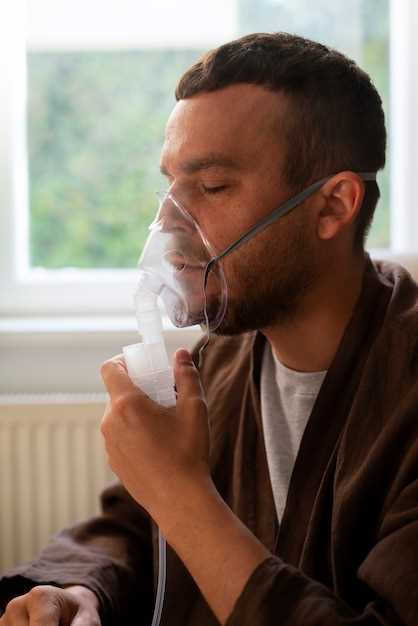
Discover the breakthrough treatment for respiratory depression with Seroquel.
Are you or a loved one suffering from the debilitating effects of respiratory depression? Look no further, as Seroquel is here to provide relief and improve your quality of life.
With its powerful and proven formula, Seroquel targets and alleviates the symptoms associated with respiratory depression, allowing you to breathe easier and regain control over your daily activities.
Why choose Seroquel?
Seroquel is the result of extensive research and dedication to providing patients with the most effective solution for respiratory depression. With its unique formulation, Seroquel delivers fast and long-lasting relief.
Not only does Seroquel address the physical symptoms of respiratory depression, but it also supports your mental well-being. Its carefully balanced ingredients help stabilize mood and improve overall mental health, ensuring a holistic approach to your recovery.
Experience the life-changing benefits of Seroquel today and regain your freedom from respiratory depression!
Understanding Seroquel
Seroquel is a medication that is commonly prescribed to treat various mental health conditions, such as schizophrenia, bipolar disorder, and major depressive disorder. It belongs to a class of drugs known as atypical antipsychotics.
Seroquel works by helping to balance certain chemicals in the brain that are responsible for mood, thinking, and behavior. It is thought to work by blocking the receptors for dopamine and serotonin, two neurotransmitters that play a role in mood regulation.
While Seroquel can be effective in managing these conditions, it is important to understand that it can also pose some risks. One of the potential side effects of Seroquel is respiratory depression.
Respiratory depression occurs when the body’s breathing rate slows down to a dangerous level. This can be caused by a variety of factors, including the use of certain medications, such as opioids or benzodiazepines, or the presence of underlying health conditions, such as sleep apnea or chronic obstructive pulmonary disease (COPD).
It is essential to be aware of the risk factors for respiratory depression when taking Seroquel. These can include a history of respiratory problems, a history of substance abuse, or the use of other medications that can depress the central nervous system.
To minimize the risk of respiratory depression while taking Seroquel, it is crucial to follow the prescribed dosage and guidelines provided by your healthcare provider. It is also important to avoid drinking alcohol or using other substances that can interact with Seroquel and increase the risk of respiratory depression.
It is vital to be able to recognize the signs of respiratory depression, as it can be a life-threatening condition. Symptoms may include slow or shallow breathing, confusion, drowsiness, and blue lips or fingertips. If you or someone you know is experiencing these symptoms, seek immediate medical help.
In summary, while Seroquel can be beneficial in managing certain mental health conditions, it is crucial to understand the potential risks, such as respiratory depression. By understanding the medication and its potential side effects, and by following the prescribed guidelines, you can ensure your safety while taking Seroquel.
Risk factors for respiratory depression
While taking Seroquel, there are certain factors that can increase the risk of experiencing respiratory depression. It is important to be aware of these risk factors to prevent any potential complications. Here are some of the common risk factors:
-
Dosage:
Taking higher doses of Seroquel can increase the likelihood of respiratory depression. Make sure to follow your doctor’s prescribed dosage and avoid self-medication.
-
Age:
Elderly individuals may be more susceptible to respiratory depression while taking Seroquel. This is because the body’s ability to metabolize medications decreases with age. It is important for older adults to be cautious and closely monitored when taking Seroquel.
-
Concurrent Substance Use:
Combining Seroquel with other substances such as alcohol or opioids can significantly increase the risk of respiratory depression. It is crucial to avoid the simultaneous use of such substances to ensure your safety.
-
Medical Conditions:
Certain medical conditions can make individuals more prone to respiratory depression when taking Seroquel. These conditions may include respiratory disorders, heart problems, or any condition that affects breathing. It is important to inform your healthcare provider about any pre-existing medical conditions before starting Seroquel.
-
Pregnancy:
Seroquel use during pregnancy may increase the risk of respiratory depression in newborns. It is important to discuss the potential risks with your doctor if you are pregnant or planning to become pregnant while taking Seroquel.
By being aware of these risk factors and taking necessary precautions, you can minimize the chances of experiencing respiratory depression while taking Seroquel. Always consult with your healthcare provider for personalized advice and guidance.
Recognizing the signs of respiratory depression

While taking Seroquel, it is important to be aware of the signs and symptoms of respiratory depression. This condition occurs when the body’s respiratory system is not functioning properly, leading to a decreased rate or depth of breathing. If left untreated, respiratory depression can be life-threatening.
Some common signs of respiratory depression include:
| Slow or shallow breathing | In respiratory depression, the person may exhibit abnormally slow or shallow breaths. The chest may move less with each breath, and the rate of breathing may slow down significantly. |
| Confusion or dizziness | Respiratory depression can also cause confusion or dizziness. This may be due to a lack of oxygen reaching the brain, leading to cognitive impairment and feelings of lightheadedness. |
| Bluish tinge to the skin or lips | When the body is not receiving enough oxygen, the skin and lips may appear bluish or cyanotic. This is a serious sign of respiratory distress and should be addressed immediately. |
| Inability to catch breath or shortness of breath | Individuals experiencing respiratory depression may feel as though they cannot catch their breath or are constantly short of breath. This can be distressing and require medical intervention. |
If you or someone you know is experiencing any of these symptoms while taking Seroquel, it is crucial to seek immediate medical help. Do not ignore respiratory depression, as it can quickly escalate and lead to severe complications. By recognizing the signs early on, you can take prompt action to ensure your safety and well-being.
Recognizing the signs of respiratory depression
Respiratory depression can be a serious side effect of taking Seroquel. It is important to be able to recognize the signs of respiratory depression so that you can seek medical help promptly. Here are some key signs to watch out for:
1. Shallow or slow breathing
One of the most common signs of respiratory depression is shallow or slow breathing. If you notice that your breathing has become more shallow or slower than usual, it could be a sign of respiratory depression.
2. Reduced oxygen levels
Respiratory depression can lead to reduced oxygen levels in the body. This can cause symptoms such as bluish discoloration of the lips, fingertips, or skin. If you notice any of these symptoms, it is important to seek medical help immediately.
It is worth noting that respiratory depression can occur even if you have been taking Seroquel for a long time without any issues. Therefore, it is important to be vigilant and aware of the signs of this potentially dangerous side effect.
If you experience any of the above symptoms or suspect that you may be experiencing respiratory depression while taking Seroquel, it is crucial to seek immediate medical attention. Ignoring these signs could lead to severe complications, so it is better to be safe than sorry.
Remember: Always consult with your healthcare provider if you have any concerns or questions about the side effects of Seroquel.
Seeking medical help for respiratory depression
If you or someone you know is experiencing symptoms of respiratory depression while taking Seroquel, it is important to seek medical help immediately. Respiratory depression can be a serious and potentially life-threatening condition, so prompt medical attention is crucial.
Here are some steps you can take if you suspect respiratory depression:
1. Stop taking Seroquel
The first thing you should do is stop taking Seroquel and any other medications that may be contributing to respiratory depression. Do not restart Seroquel without consulting a healthcare professional.
2. Contact your healthcare provider

Reach out to your healthcare provider as soon as possible. They will be able to evaluate your symptoms and provide guidance on what steps to take next.
3. Describe your symptoms
When speaking to your healthcare provider, be sure to provide a detailed description of your symptoms. This may include difficulty breathing, shallow breathing, or a decreased rate of breathing.
4. Follow their instructions
Follow any instructions provided by your healthcare provider. This may include going to the emergency room for immediate care, scheduling an appointment for further evaluation, or adjusting your medication regimen.
Remember, respiratory depression can be a serious condition, so it is important to seek medical help promptly. Your healthcare provider will be able to assess your situation and provide appropriate treatment options to ensure your safety and well-being.
